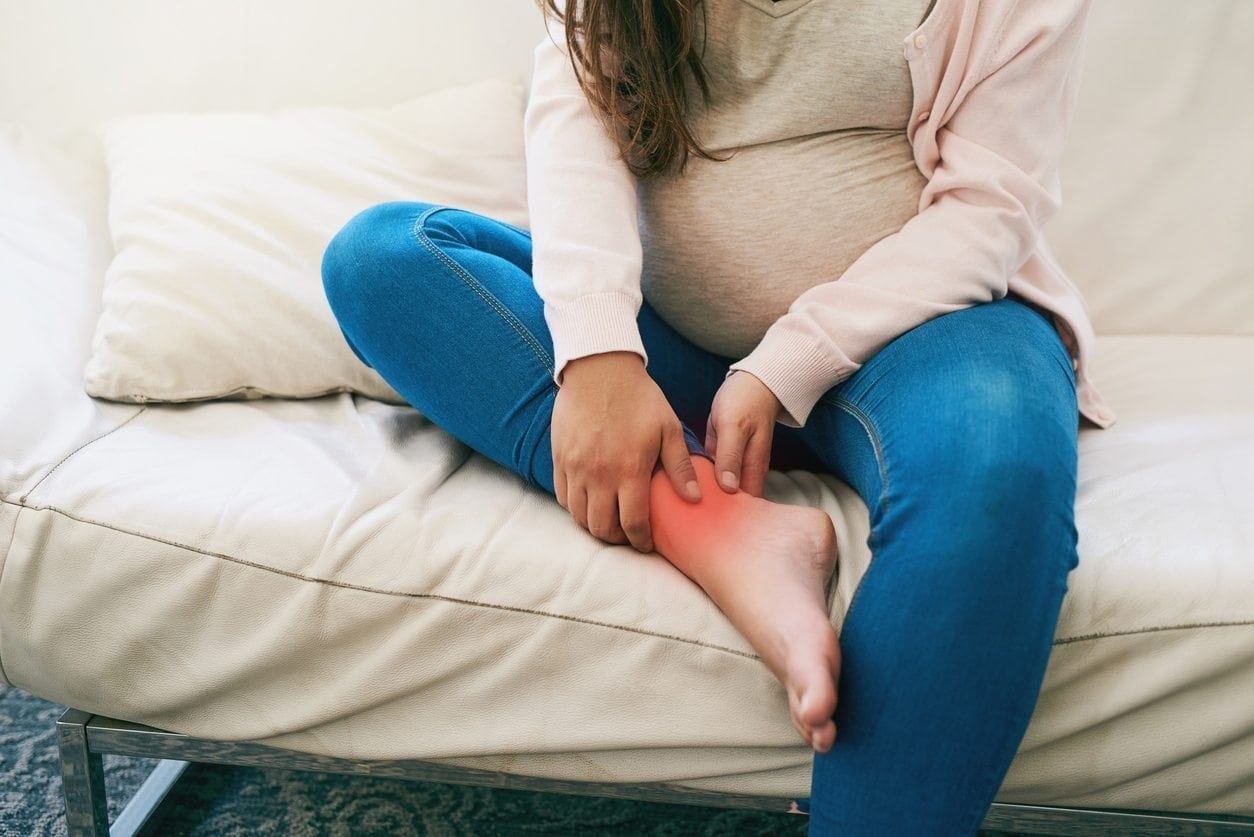Swelling during pregnancy is quite common, affecting about 75% of all pregnant women. Normal pregnancy swelling, called edema, is most commonly experienced in the feet, ankles, legs, hands, or face. Edema may be experienced at any point during pregnancy. However, for most women, it occurs between week 22 and week 27 of their pregnancy and resolves itself soon after the baby is delivered.
Various factors contribute to pregnancy swelling. One of which is the body’s production of about 50% more body fluids to nurture the baby’s development. The increase of bodily fluids helps your body expand with the growing baby and prepares pelvic joints and tissues to adapt in preparation for the delivery. The weight of the developing baby also plays a role, as it puts pressure on the veins, slowing the transfer of blood to the heart, decreasing circulation, and leading to swelling.
While this type of mild swelling can be uncomfortable, it is no cause for concern. However, there are some instances where swelling can be severe. If you find that your hands or face are puffy and your swelling doesn’t improve overnight, it is important to contact your health care provider. Excessive swelling can be a sign of preeclampsia, also known as pregnancy-induced hypertension or toxemia. Additionally, sudden swelling and pain in one leg could signify a blood clot or a sudden jump in blood pressure. Each of these situations requires quick attention and prompt treatment. It is important to consult your health care professional about your swelling for these reasons.
Tips for Managing Swelling During Pregnancy
One of the side effects of normal swelling is heavy, achy legs and feet. Fortunately, there are several things you can do to help alleviate the symptoms.
Exercise
Daily physical activity can help alleviate the swelling. Walking can help keep the blood circulating, and some may also find swimming in a pool helpful. Just check with your health care professional first. There is some evidence that standing or walking in a pool can help compress leg tissues and provide relief from swelling. Some women have found that riding a stationary bike is an excellent way to get some exercise into their daily routine.
Increase Hydration
As with other healthy living advice, you’ll find recommendations to drink between eight and ten glasses of water a day, among other tips provided to women experiencing pregnancy swelling. Your water intake should flush out fluids packed with excess sodium and waste products. This can reduce swelling and prevent other pregnancy discomforts (such as headaches).
Stay Cool
Swelling tends to worsen during high temperatures, so it may be helpful to stay inside on hot days. Whether this means boosting the impact of your air conditioning or spending time in a cool bath, reducing your core body temperature can lead to decreased swelling.
Sleep on Your Side
One factor that affects swelling is the additional pressure on the veins leading to your heart. Rolling onto your side when sleeping can relieve some of that pressure. Many experts recommend sleeping on your left side to increase the productivity of your kidneys, aiding waste elimination and further reducing swelling.
Try Compression Therapy
Compression garments, such as maternity pantyhose, thigh-high stockings, and compression socks can help persistent swelling. If you have significant swelling, you can get a prescription from your health care provider for special compression stockings. Refer to the infographic below to get some insights into the appropriate types of compression wear during your pregnancy. Full-length support hose may provide relief best if you put them on before swelling starts in the morning. Don’t give in to a temptation to wear socks that restrict your blood flow with tight bands around the calves or ankles. These aren’t a replacement for authentic compression wear.

Some swelling during pregnancy is normal and is very treatable. With education into the causes of swelling and the best methods for relief, you should find that pregnancy-related swelling isn’t more than you can handle. By learning to recognize the signs of preeclampsia, you can avoid this serious condition, focus on alleviating the discomfort of swelling and enjoy a healthy pregnancy, focusing on your anticipation of the new arrival.

























